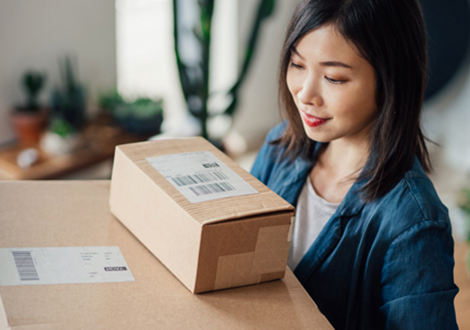
As dramatic change impacts nearly every business sector, the grocery industry is facing disruption from digitally-native newcomers. E-commerce companies, such as Amazon, have brought their technology muscle to bear, delivering a better customer experience to shoppers. These companies are savvy to increased consumer expectations around wanting more personalization and convenience when shopping, which has been the driver behind the latest technological innovations sweeping the industry.
One of the biggest trends over the last few years has obviously been online shopping. A recent report indicates that as of last year, 49 percent of U.S. consumers shopped for consumer packaged goods (CPG) online and that by 2022 they could spend $100 billion a year online for groceries. Surprisingly, it isn’t just millennials that are powering this trend. The same report found that 61 percent of Millennials, 55 percent of Generation X, 41 percent of Boomers and 39 percent of the Greatest Generation purchased a CPG online.
So, what does this mean for the industry? According to McKinsey, while U.S. grocers saw a steady 4.5 percent growth in revenue over the past decade, many traditional grocery retailers are seeing sales and margins fall. The challenge these grocers face is meeting consumer demands for increased convenience, richer shopping experiences, and greater digital options within the brick-and-mortar business.
Many are focusing investments on new technologies and business models to drive growth and maintain relevance with consumers.
Brick-and-Mortar Going Digital
Brick-and-mortar businesses are beginning to embrace new technological advances to reimagine many aspects of the in-store grocery shopping experience. By harnessing data about consumer preferences and leveraging apps, physical stores can make it easier for shoppers to find specific products and even purchase them on the spot.
Foodnavigator.com reports: “Traditional supermarkets are fighting back against the online disruptors – and information about shoppers’ preferences and habits will be an important weapon,” stated Bjorn Thumas, director of business development at equipment supplier, Tomara. “Consumer-facing technologies, such as shopping-cart-mounted devices or smartphone apps, will steer shoppers towards the aisles and shelves where they are more likely to make purchases. Sensors in the store’s shelves will keep track of the items customers put in their carts and bill their mobile payment system as they exit the store.”
Consumers Want Choice When It Comes Payments
E-commerce was quick to recognize the importance of delivering multi-channel choices to consumers who want the most convenient experience possible. Today, many brick-and-mortar stores are jumping on the bandwagon to improve their point-of-sale (POS) options.
Grocers are exploring the ability to vault accounts securely in a mobile application - whether it be Apple Pay®, Google Pay®, Samsung Pay®, PayPal®, Visa Checkout®, or a card on file. This allows them to use tokens in order to authorize transactions in a secure way that doesn’t require shoppers to reenter card details each time they make a purchase. By simplifying transactions, grocers can make shopping more convenient, dramatically improving the customer experience.
In addition to enhancing the shopping experience, expanding the range of payment options allows grocers to optimize payments, which is especially important in this low-margin industry. The goal here is to reduce the total cost of payment acceptance by lowering fees and fraud rates.
Some grocers have taken this a step further, exploring options that promote lower cost payments, such as ACH, in exchange for loyalty offers and other promotions. This is advantageous to the customer who earns rewards, while also helping to drive down costs for the grocer.
Big Data Holds the Potential for Big Advantages
In order to deliver the best customer experience possible, grocers will need insights into what those customer’s likes, wants and interests are. Online retailers are already harvesting this type of information with each page view, click, and purchase. Brick-and-mortar stores can similarly avail themselves of customer data through card and mobile wallet purchases, apps and other scan-and-shop technologies.
Shopper data will afford grocers the insights they need to make important decisions about product placements and more personalized promotions that create better customer engagement and store loyalty. Advanced analytics and artificial intelligence (AI) and machine learning will be key to unlocking these insights.
Industry trade publication, Foodnavigator.com, goes on to say: "Using predictive analytics to create forward-looking and highly personalized programs based on individual customer preferences and behaviors is the long-standing goal, but doing this at speed and scale, is still a challenge. Understanding the what, when, where and how customers buy and then making a quick, impactful decision to drive growth, that can also be accurately measured is still beyond the reach of many retailers. Those companies who get this right, embed a customer insight-driven approach across the entire business, will be the ones that lead the pack."
With the right data insights in hand, grocers will be able to ensure store shelves are stocked with the item’s customers want and that promotions are delivering desired results.
Getting the Experience Right Will Be Crucial
Many grocers are already competing with online retailers using same-day delivery and curb-side pick-up services to help improve engagement and retention. In the years to come, successful grocers will likely employ more and more digital technologies to improve the in-store experience. If stores are able to get it right, and provide the type of experience customers are clamoring for, this may be just the advantage they need over online competitors.




